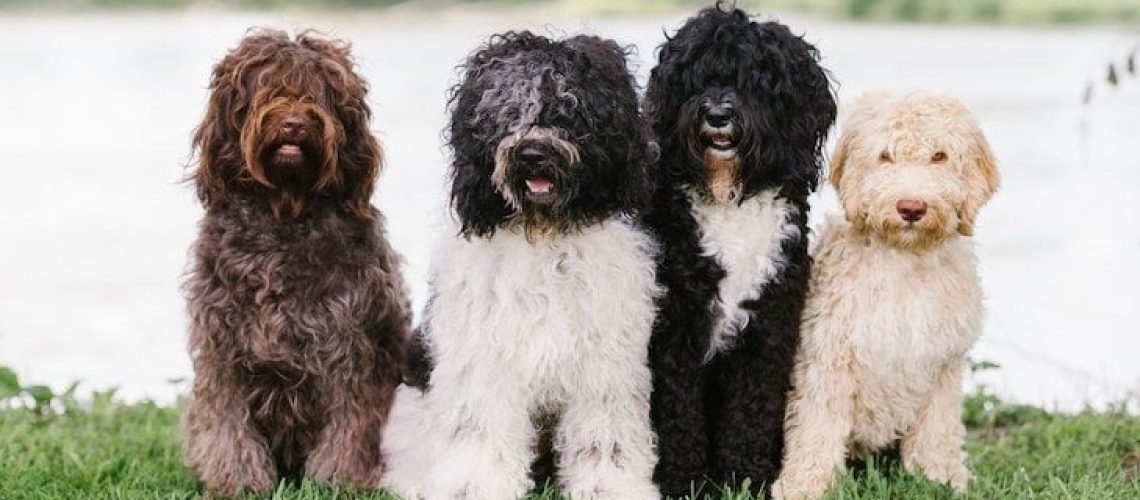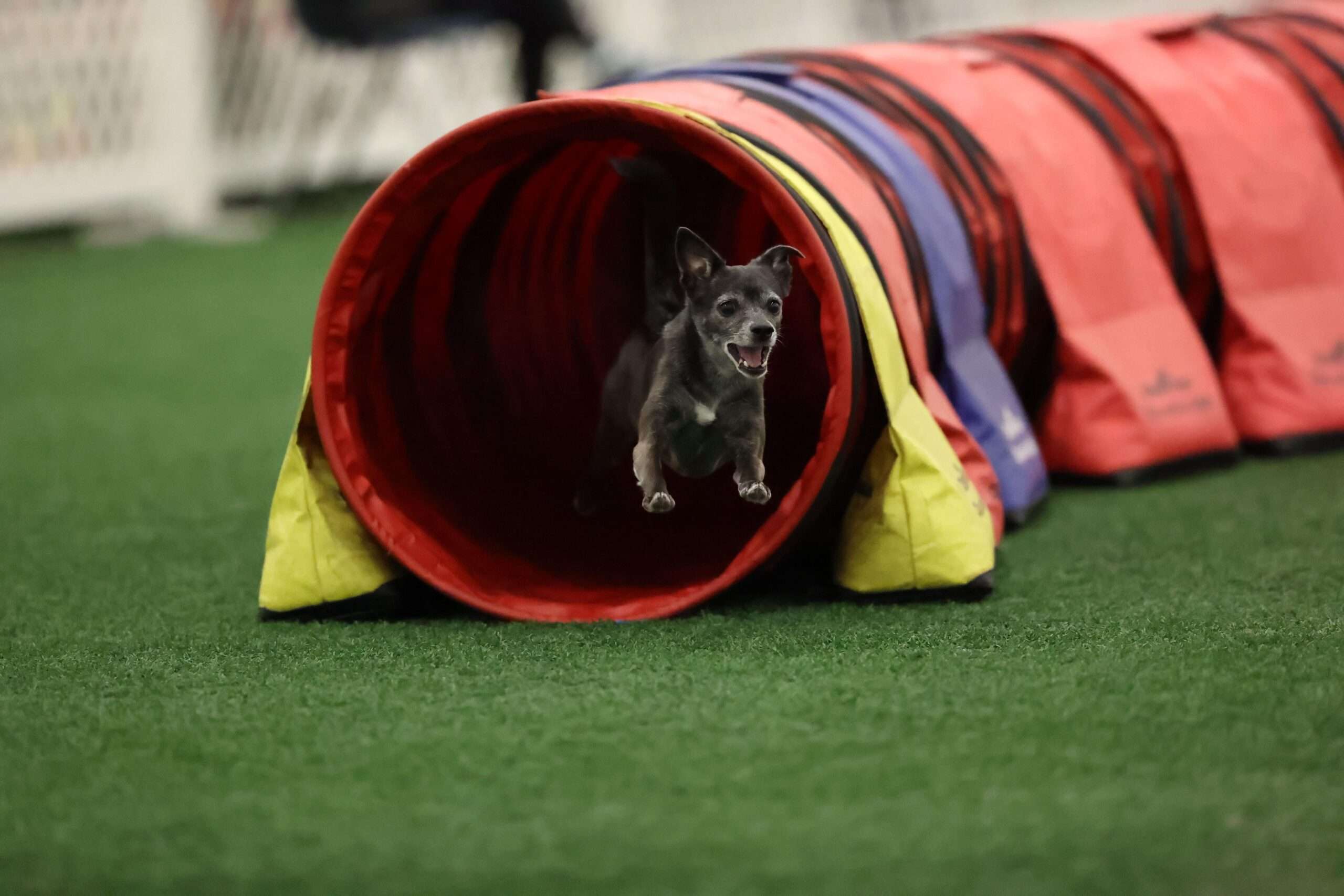Key Takeaways:
- Barbets are a medium-sized dog breed known for their curly coats and distinct beard.
- They are intelligent and trainable, making them suitable for various activities such as obedience training and agility sports.
- Barbets require regular grooming to maintain their curly coat, including brushing and occasional trimming.
- They have a friendly and sociable nature, getting along well with children and other pets when properly socialized.
- Regular exercise is essential for Barbets to prevent boredom and maintain their overall health and well-being.
Are you curious about dogs and their unique characteristics? If so, you're in for a treat! In this article, we'll be diving into the fascinating world of Barbet dogs. These fluffy and lovable creatures have a lot to offer, and understanding their breed characteristics and care can bring immense joy and fulfillment to your life. Whether you're a dog enthusiast or considering getting a Barbet as a pet, this topic is essential for you. So, let's embark on this journey together and discover everything there is to know about Barbet dogs. Get ready to be captivated by their charm and learn how to provide them with the best care possible. Let's jump right in!
What is a Barbet dog and what makes it unique?
A Barbet dog is a medium-sized breed known for its curly, woolly coat and friendly personality. They have a long history as water retrievers and were originally bred for hunting waterfowl. The Barbet's dense coat helps protect them from the cold and wet conditions they were often exposed to while retrieving game.
One of the unique features of the Barbet is their coat, which requires regular grooming to prevent matting. Their curly hair can grow quite long, so regular brushing is necessary to keep it tangle-free. Barbets also have webbed feet, which make them excellent swimmers. This trait, along with their love for water, sets them apart from many other breeds.
Curly Coat
The Barbet's curly coat is one of its most distinctive features. It not only gives them a unique appearance but also provides protection against harsh weather conditions. The dense curls help to insulate their bodies and keep them warm in cold temperatures.
Webbed Feet
The webbing between the toes of a Barbet's feet allows them to swim effortlessly. This feature makes them natural swimmers and excellent at retrieving objects from the water. Whether it's a stick or a ball, Barbets are always ready for some aquatic fun!
Friendly Personality
Barbets are known for their friendly and sociable nature. They get along well with children and other animals, making them great family pets. Their easy-going temperament also makes them suitable for therapy work or service roles.
In summary:
- The Barbet has a curly coat that requires regular grooming.
- They have webbed feet, which make them excellent swimmers.
- Barbets have a friendly and sociable personality.
Caring for a Barbet: Grooming and exercise needs
Grooming plays a crucial role in keeping your Barbet healthy and comfortable. Their curly coat requires regular brushing to prevent matting and tangling. Aim to brush their coat at least two to three times a week, paying extra attention to areas prone to matting, such as behind the ears and under the legs. Regular grooming also helps maintain the natural oils in their fur, keeping it soft and shiny.
In addition to grooming, Barbets need regular exercise to keep them physically and mentally stimulated. They enjoy activities that involve water, such as swimming or playing fetch in the lake or pool. Daily walks are also essential to meet their exercise needs. Aim for at least 30 minutes of moderate exercise each day to keep your Barbet happy and healthy.
Grooming Tips:
- Brush your Barbet's coat regularly to prevent matting.
- Pay extra attention to areas prone to tangling, such as behind the ears and under the legs.
- Trim their nails regularly to prevent overgrowth.
- Clean their ears regularly with a veterinarian-recommended solution.
Exercise Recommendations:
- Engage your Barbet in activities that involve water, such as swimming or playing fetch in a pool or lake.
- Take them for daily walks of at least 30 minutes.
- Provide mental stimulation through puzzle toys or training sessions.
In summary:
- Regular grooming, including brushing and nail trimming, is essential for a Barbet's well-being.
- Barbets need daily exercise, including activities that involve water and regular walks.
Training a Barbet: Are they easy to train? What are their personality traits?
Trainability of Barbets
Barbets are known for their high level of intelligence and eagerness to please, which makes them relatively easy to train. They are quick learners and respond well to positive reinforcement techniques such as treats, praise, and play. However, it is important to start training early in their puppyhood to establish good behaviors and prevent any potential stubbornness from developing. Consistency and patience are key when training a Barbet.
Personality Traits
Barbets have a friendly and outgoing personality that makes them excellent companions. They are known for being gentle, affectionate, and loyal towards their owners. These dogs thrive on human interaction and enjoy being part of the family activities. Their sociable nature also extends to other animals, as they generally get along well with other pets in the household. Barbets have a playful side but can also be calm and relaxed indoors, making them adaptable to different living environments.
Key Personality Traits:
- Friendly and outgoing
- Gentle and affectionate
- Loyal towards their owners
- Sociable with other animals
The history and origin of the Barbet breed
The Barbet breed has a long history that dates back several centuries. Its exact origins are somewhat debated, but it is believed that Barbets originated in France or possibly Spain. These dogs were primarily bred as versatile working dogs, excelling in various tasks such as retrieving game from water, herding livestock, and even serving as companions for sailors due to their swimming abilities.
The name "Barbet" comes from the French word "barbe," which means beard. This name is fitting because Barbets have a distinctive facial hair growth that resembles a beard. Over time, the breed's popularity spread across Europe, and they became favored by French nobility and royalty. However, during the World Wars, Barbets faced a decline in numbers and were nearly extinct. Thanks to dedicated breed enthusiasts, the Barbet population was revived, and today they are cherished as both working dogs and beloved family pets.
Common health issues in Barbets and how to prevent/manage them
Barbets are generally considered a healthy breed with a robust constitution. However, like any dog breed, they may be prone to certain health issues that potential owners should be aware of. Regular veterinary check-ups and preventive measures can help ensure their well-being.
Common Health Issues:
- Hip Dysplasia: This is a genetic condition where the hip joint does not develop properly. Regular exercise on soft surfaces and maintaining a healthy weight can help prevent or manage this condition.
- Progressive Retinal Atrophy (PRA): PRA is an inherited eye disease that leads to gradual vision loss. Regular eye examinations by a veterinarian can detect early signs of PRA.
- Ear Infections: Due to their floppy ears, Barbets may be more susceptible to ear infections. Regular cleaning and proper drying after swimming can help prevent these infections.
It is important for Barbet owners to provide regular exercise, maintain a balanced diet, and keep up with vaccinations and parasite prevention to ensure their overall health.
Barbets as family pets: Getting along with children and other animals
Barbets make excellent family pets due to their friendly nature and ability to get along well with children and other animals.
Interaction with Children
Barbets are known for their patience and gentle demeanor, which makes them great companions for children of all ages. They have a playful side that matches well with kids' energy levels but also know when to be calm and gentle. However, as with any dog, it is important to teach children how to properly interact with pets and supervise their interactions to ensure the safety of both the child and the dog.
Interaction with Other Animals
Barbets generally have a friendly and sociable nature towards other animals. They can get along well with other dogs, cats, and even smaller pets if properly introduced and socialized from an early age. Early socialization helps them develop positive relationships and reduces the likelihood of any aggressive behavior towards other animals.
Daily time and attention requirements for a Barbet dog
Barbets are highly sociable dogs that thrive on human companionship. They require daily interaction, exercise, and mental stimulation to stay happy and healthy.
Exercise Needs
Barbets are an active breed that enjoys physical activities such as walking, running, swimming, or playing fetch. They require at least 30-60 minutes of exercise every day to burn off energy and maintain a healthy weight. Engaging in interactive games or training sessions can also provide mental stimulation for these intelligent dogs.
Mental Stimulation
In addition to physical exercise, Barbets need mental stimulation to prevent boredom and destructive behaviors. Puzzle toys, obedience training sessions, or learning new tricks can keep their minds engaged. They excel in various canine sports such as agility or obedience trials, which provide both mental and physical challenges.
It is essential for Barbet owners to dedicate quality time each day for playtime, training sessions, walks, or simply cuddling on the couch. This level of attention ensures a strong bond between the owner and their Barbet while keeping them mentally stimulated and physically fit.
In conclusion, the Barbet is a friendly and intelligent dog breed that requires regular grooming and exercise. With proper care and attention, they can make great companions for families or individuals looking for a loyal and affectionate pet.
What are the cons of the Barbet dog?
Cons! Minimal shedding: Despite having a dense coat, this breed is not known for shedding much hair. Regular grooming is required: This dog's coat should be thoroughly brushed at least twice a week. Additionally, it is necessary to take them to a professional groomer three or four times a year to maintain the health of their coat.
Is a Barbet a good family dog?
The barbet is a highly friendly and cheerful breed with a pleasant personality. They are obedient and quick learners, and benefit from ongoing training throughout their lives. This breed is known for its loyalty and prefers to be in the presence of their family as much as possible.
What are the health problems with Barbet?
Despite the limited genetic diversity of the Barbet breed, it remains surprisingly healthy due to careful selection by responsible breeders. These breeders prioritize screening for health issues such as hip and elbow dysplasia, progressive retinal atrophy (PRA), seizure disorders, and allergies.
What do I need to know before getting a Barbet?
Barbets are energetic dogs that require daily exercise. It is important to keep them on a leash or in a confined space when outside to prevent them from chasing smaller animals. They have a natural inclination to jump into water, even in cold temperatures, but their thick skin and coat provide protection against the cold. (Note: Some information from the original text was omitted in the paraphrase.)
Can Barbet be left alone?
According to Sarah Wooten, DVM, a veterinary expert for Pumpkin Pet Insurance, Barbets are most compatible with active individuals. They can also adapt well to families with children as long as they receive sufficient exercise and appropriate training. Barbets are sociable creatures and do not prefer being alone for extended periods of time.
Are Barbets high maintenance?
Before getting a barbet as a pet, it is crucial to ensure that you are capable of handling its grooming, exercise, and training requirements. The barbet has a curly and thick coat, which means it doesn't shed much, but regular grooming is necessary.

















